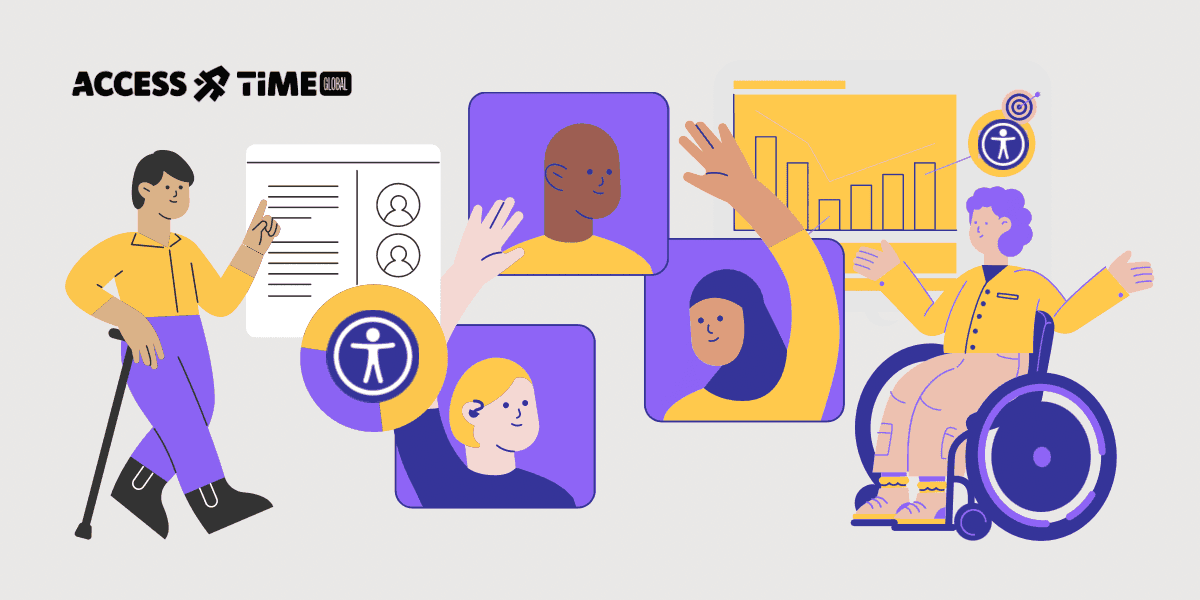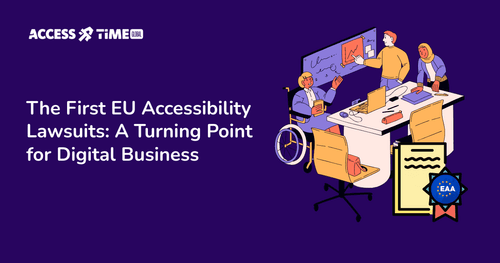The Hidden Innovators: How Disability Drives Universal Design
Prasaja Mukti - Accessibility UX Writer
●●
Every morning, millions of people wake up and interact with innovations born from necessity, necessity driven by disability. They swipe across their smartphone screens, ask Alexa or Siri to play their favorite playlist, walk through automatic doors, and listen to audiobooks during their commute. What most don't realize is that these everyday conveniences exist because someone with a disability needed a better way to navigate the world.
Some of our most transformative technologies weren't created in spite of disability, but because of it. The story of innovation is deeply intertwined with the story of people with disabilities refusing to accept barriers as permanent fixtures.
The Innovation Imperative: When Necessity Becomes Invention
Let's start with something you probably touched within the last hour (or now, even)–your smartphone screen. The multitouch technology that revolutionized how we interact with devices wasn't developed by a tech giant's R&D department dreaming up the future. It was created by Wayne Westerman, an electrical engineer whose carpal tunnel syndrome made traditional keyboards painful to use. His personal need for a better way to input information led him to develop finger-sensitive touch technology. Apple recognized the potential, acquired his company, and the rest is history, literally reshaping how humanity interacts with technology.
This pattern repeats itself throughout innovation history. Voice recognition technology, the foundation of every virtual assistant from Siri to Google Assistant, was initially developed to help people with mobility impairments control computers without using their hands. Text-to-speech software emerged from the need to make written content accessible to people who are blind. Even something as mundane as the bendy straw was invented by Joseph Friedman in 1937 after watching his daughter struggle to drink a milkshake through a straight straw at a soda fountain.
From Personal Solutions to Universal Benefits
What's fascinating about disability-driven innovation is how it creates what we call the "universal design effect." Solutions developed for specific accessibility needs often end up benefiting everyone. Closed captions were created for deaf and hard-of-hearing viewers, but now they're used by people exercising in noisy gyms, parents trying not to wake sleeping babies, and language learners improving their comprehension.
Audiobooks started as a service for people with visual impairments, but they've transformed into a multi-billion-dollar industry serving busy commuters, multitaskers, and anyone who prefers auditory learning. Automatic doors weren't just about wheelchair accessibility – they became essential for parents with strollers, delivery workers with full hands, and anyone carrying groceries.
This ripple effect demonstrates something crucial about inclusive innovation: when we design for the edges, we often improve the center. People with disabilities represent what designers call "extreme users" – their needs push technology to be more flexible, more intuitive, and more robust.
When Potential Goes Unrealized

This gap represents more than inconvenience; it represents lost opportunities, excluded experiences, and unrealized potential. How many innovations might have emerged if more people with disabilities had been included in water sports, team activities, or outdoor adventures from the beginning?
The One-in-Six Reality: Untapped Innovation Potential
Here's a statistic that should make every product developer pause: one in six people worldwide lives with a disability. That's over 1.3 billion people, each navigating unique challenges that could spark the next breakthrough innovation. Yet most of these individuals remain on the periphery of the design process, consulted as an afterthought rather than engaged as co-creators.
Imagine the innovations we're missing. What breakthrough might emerge from the student who experiences learning differently? What game-changing interface could be developed by someone who navigates the world without sight? What revolutionary communication tool might spring from someone who processes language uniquely?
Shifting the Paradigm From Accommodation to Innovation Leadership
The most successful companies are beginning to understand that disability isn't a design constraint – it's a design catalyst. Microsoft's inclusive design toolkit, Apple's comprehensive accessibility features, and Google's AI-powered accessibility tools didn't emerge from compliance requirements. They emerged from recognizing that people with disabilities are often the most innovative users, developing creative workarounds and identifying needs that others miss.
When organizations embrace what I call "disability-led innovation," they don't just create more accessible products – they create better products, period. They tap into insights that come from navigating the world differently, from problem-solving under constraints, and from reimagining how things could work rather than accepting how they've always worked.
If disability has been a catalyst for some of the world’s greatest innovations, imagine what could happen if more organizations intentionally designed with accessibility from the start. Ready to explore how disability-led design can shape your next breakthrough? Let’s talk with our accessibility expert here at AccessTime.
Contact Us
Ready to explore how accessibility can transform your products? Visit our contact page to learn more about AccessTime consultancy services, or try Access Lens to get started with a fresh perspective on what's possible.
Share:

